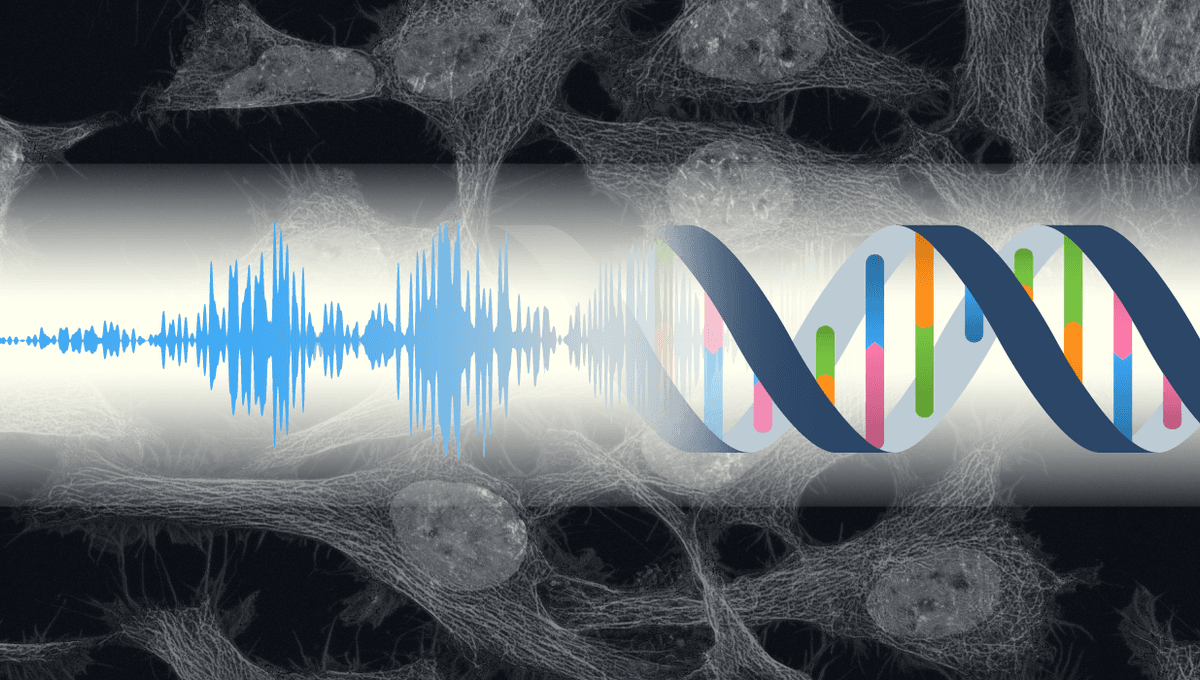
Sound can induce changes in cells and one team of researchers think this could be an effective way to manipulate their behavior, including for the treatment of disease.
Sound waves are variations in air pressure. Our ears are so finely tuned to amplifying them over a certain range of frequencies, that we can sense pressure changes through them that are undetectable through other means. However, when the pressure variations are large enough, we can feel them through our body, as anyone who has stood next to a speaker at a loud concert knows.
Those changes apply a force to cells, be they free-living or part of an organism. Our bodies rely on cells undergoing certain changes at the right times and not the wrong ones. External stimuli are essential for them to know when the time is right. Billions of years of evolution have seen them develop sophisticated methods to collect useful stimuli.
Dr Masahiro Kumeta of Kyoto University is exploring whether cells make use of the information sound can provide about the conditions in which the cell is living. As Kumeta and coauthors note; “Sound [is] one of the most ubiquitous physical forces in nature.”
“To investigate the effect of sound on cellular activities, we designed a system to bathe cultured cells in acoustic waves,” Kumeta said in a statement.
Kumeta and colleagues attached a diaphragm to a culture dish containing mouse cells and had it respond to signals from an audio player. The cells were exposed to 440 Hz (A above middle C) and 14 KHz (near the highest pitch many people can detect). They observed changes in the cells’ behavior between cells exposed to these sounds and those bathed in white noise instead.
Rather than relying purely on the observations at a cellular level, the team identified more than 150 genes whose expression was affected by sound exposure and observed how the signals are transmitted within the cells.
Responses varied by cell type. The most significant difference observed was that the sound waves suppressed adipocyte differentiation, in which preadipocyte cells turn into fat cells.
It’s definitely premature to conclude this means exposing your body to loud tones could form a weight loss program, although some scammer is probably drawing up a brochure for sound spas as we speak. In particular, it’s worth noting some of the cells were exposed to sound continuously for 24 hours. Only a third as many genes had their expression rates changed by just two hours exposure.
Nevertheless, Kumeta is excited about the potential. “Since sound is non-material, acoustic stimulation is a tool that is non-invasive, safe, and immediate, and will likely benefit medicine and healthcare,” he said.
Many genes responded to one frequency in the experiment and not the other. Indeed, seven showed upregulation to one frequency and downregulation to the other. For example, one set of genes was more likely to be expressed after 24 hours of exposure to high-pitched sounds, but showed less expression after the same time being vibrated at 440 KHz.
The authors tried sine waves, square waves, and triangle waves at the relevant frequencies. They found the response to usually be similar to each, but the sine waves were most efficient. Stranger still, responses were affected by cell density, with some genes having opposite responses to a particular sound at high and low cell density.
The authors point to research that shows white noise from the air can be transmitted through hard and soft tissue in sheep to a fetus. Presumably, it works at least as well in humans without all that noise-suppressing wool.
The evolutionary benefit of these responses remains unknown. After all, 24 hours of exposure to a particular note would not have been common until recently. However, the authors note that many of the genes affected by extended 14 KHz exposure were those associated with hypoxia (oxygen deprivation), hinting at some connection.
Unknown questions aside, the work implies one does not need ears, or even a brain, to sense and respond to sound, information that may not surprise anyone who has spent much time in mosh pits.
The study is open access in Communications Biology.
Source Link: Who Needs Ears? Your Cells Can Respond To Sound